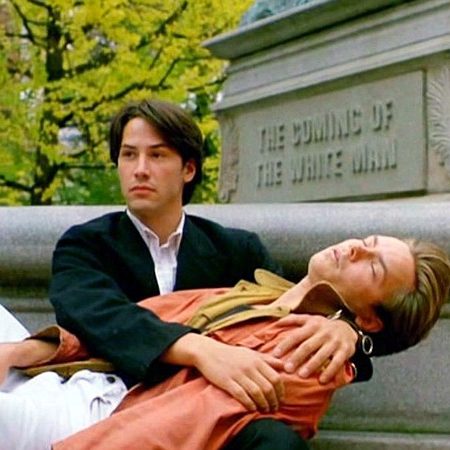Nature is neither beautiful nor worth spending time in: it is capricious when not cruel. Evil Does Not Exist, the latest film by writer-director Ryûsuke Hamaguchi (Drive My Car, Wheel of Fortune and Time) bookends with a low angle shot of oak, mountain cherry, and larch branches crisscrossing in the winter chill like curtains at the beginning and end of a play. Pretty in itself? Maybe. But this lattice of needles, leaves, and wood forms a cage too. Nature has a habit of turning against admirers. Hence the insistence on testing our patience with that shot. Remember this, he seems to say.
A humanist filmmaker in the lineage of Jean Renoir, Hamaguchi writes characters who surprise themselves. Presenting characters who motivations conflict doesn’t bother him. People often don’t make sense. Takumi (Hitoshi Omika), a local odd-jobs guy, doesn’t say much, not even to the grade school daughter Hana (Ryo Nishikawa) whom he adores. Being a widower has something to do with it. He’s a man who concentrates on the job at hand, for example the methodical way in which he cuts wood. Hamaguchi lingers on the task with loving fascination; after a minute we adjust to his rhythms and watch Takumi’s firm posture, his grip on the axe, and the swiftness with which it descends. They live in a sleepy village of cabins and abandoned rail cars. Wild wasabi grows in the woods — it will complement the noodle shop’s udon, for which they use water from the streams.
Discord appears in the form of two hacks employed by an entrepreneur who wants to build a glamping resort on a parcel of land near the village. In a hastily assembled townhall meeting Takahashi (Ryuji Kosaka) and Mayuzumi (Ayaka Shibutani) realize they’re outgunned and outmanned. Villagers ask polite but nervous questions about septic tank location and capacity, how much run-off will taint those pristine waters, and whether someone will keep an eye on those rowdy Tokyo tourists after hours. At every point Takahashi responds with the twaddle of corporate speak (“optimize”; a “mutually beneficial” relationship) while Mayuzumi’s face is a mask of dismay. This racket’s not for them, a point made when Hamaguchi leaves the village for Tokyo so that the entrepreneur can regale Takahashi and Mayuzumi with more poppycock (“You can’t get a head start if you aim for perfection”). He has a new order: recruit Takumi as the glamping site’s new watchperson. Because COVID-era subsidies for businesses like his will run out, the would-be plutocrat has a reason to hurry.
Driven to confound expectations, Evil Does Not Exist makes good on its title. On the car ride back to the village Takahashi and Mayuzumi confide in how their lives went wrong. The latter wanted to be a healthcare practitioner, the former…an actor. Left unsaid is how cynics like the glamping entrepreneur exploited Takahashi’s desires: you can still be an actor by fooling these rural yokels, he might have told him. Kosaka and Shibutani are ideally cast as good people of ordinary imaginations. Just when Hamaguchi prepares us for one of those grinds in which country mice teach city mice important values like chopping wood — Takahashi takes a triumphant turn with the axe — Evil Does Not Exist takes an unpredicted, heartstopping direction involving Hana and deer.
To say more would not just spoil the ending but explain away an element of randomness that I wish more directors allowed themselves. Drive My Car, an international smash and surprise 2021 Oscar favorite, depended on chance; Asako I & II more so. So much hangs on the piquant notes in Eiko Ishibashi’s score, the empathy that Omika finds in stolidity, and Yoshio Kitagawa’s use of close-ups to create mounting terror. Evil may not exist but it’s not as if the universe needed to believe it to strike like a rattlesnake.
GRADE: A-

